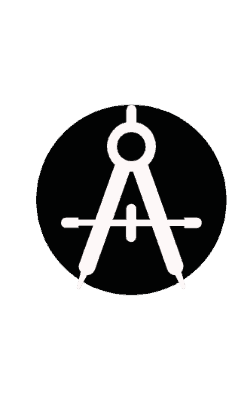No matter which profession you are in, requesting a referral is not the easiest thing to do. I remember quite fondly wiping sweat off my brow the first time I had to make the request – it can be quite terrifying for a new landscape architect or garden designer to sum up the courage to ask a client for one.
But there is no denying that referrals are a large part of doing business. According to one Nielson study, 92% of consumers have greater faith in referrals from people they know. Unless you have name recognition within the industry, generating a strong client base without referrals is extremely difficult. The question I often receive is “How do I get more Landscape Design referrals?”.
In this article, I am going to review 6 tips that I have found helpful to get more client referrals. Hopefully these can help ease your nerves when you make the request:
Tip #1: Not All Clients Are Created Equal – Focus on Volume Clients
If you’ve been practicing for a little while, you may notice that there are different types of clients. There are some clients (we will call them Group A) that you’ve done repeated work for, and others (Group B) that you’ve only done one or two projects with. When looking back through your invoices, the two types of clients may seem similar – Client A may have provided you a large number of small jobs, while Client B may have provided you a single large one.
It is easy to think that Client B might be a better candidate for a referral request having provided such a large job. But I have found that consistent volume is often a better indicator of positive referrals.
Asking a referral from clients that have generated a large work volume from your company is more likely to be met with acceptance because you’ve built a reliable work relationship based on dependability and achievement. When you ask for a referral, the client is not only recommending your work but also your character. If they have provided consistent work volume, the recommendation request will most likely go much smoother.
Tip #2: Buy the Rumor, Sell the News
This old stock market adage is a relevant one for designers when considering asking for a referral. When we say “buy the rumor”, we mean to listen to your client’s needs and actively respond to their comments or concerns. Buy in to what they are selling.
It is easy for a client to know when they are being brushed off so you can just finish the job and leave. According to a recent report from U.S. News & World Report, clients are much more receptive to contractors and designers that have good communication skills and relaxed personalities even during troublesome projects.
Think about this from your own life experiences. Have you ever hired someone to complete work on your home and was always late, didn’t call you back quickly, or miscommunicated about the objectives of the design? It happens more than you think. I have found good listening can go a long way in developing more favorable client referral requests.
“Selling the News” simply means to capitalize on the good work your company is already doing. Did you recently complete a charitable project for someone? Was your company profiled in any recent news articles? Are you giving a talk to a local garden club? These are great achievements that can let your clients know that your quality work extends beyond their project. And remember, the information should be communicated humbly – you don’t want to come across as arrogant.
A good way to try this technique is to slip it into a casual conversation by relating it to the current topic. For example, you can begin with the standard conversation starter for all occasions – the weather.
Perhaps you discuss how wet it’s been lately and discretely sneak in the news that you did a rain garden on a nearby property that is doing well. Or perhaps the opposite and the lack of rain has been horrible – maybe this is a good chance to discuss the benefits of using native plants and a particularly successful project you’ve done in the past.
Whichever technique you use, don’t be afraid to sell yourself. A client will never feel confident in a contractor that is not confident in them self.
Tip #3: Don’t Only Focus on Previous Clients – Referrals Can Be Partnerships
Just for a second imagine you are the proud owner of a beautiful golden retriever. You love the dog very much and you want to provide it with the absolute best premium dog food money can buy. In this scenario, you probably wouldn’t ask your neighbor for a referral on good dog food, you would probably ask a veterinarian. In this example, the referral of which dog food brand to purchase is facilitated by an expert in the field of pets. This analogy can also be applied to landscape design projects.
If you are looking for referrals, start by making relationships with other key people that directly engage with your potential client base. These can be nursery professionals, paving suppliers, maintenance companies, and others. These individuals are key lead-generators for the landscape industry and could be very helpful in attracting clients.
I actually have found realtors to be very helpful in generating leads and just generally insightful on the housing marketplace. They often know which neighborhoods are seeing higher turnover and what price range seems to be generating the most sales. The introduction doesn’t need to be formal – just call an office or realtor from a listing you find and offer to buy them a coffee. The five dollars you spent on the fancy cappuccino will be well spent.
In short, try to leverage the contacts that you have to your advantage and don’t be afraid to reciprocate when needed. Partnerships within the landscape field are essential to developing a long profitable career.
Tip #4: Know When to Stop – Don’t Be The Squeaky Wheel
There is a sign in the manager’s office of my nearby bank that reads: “The squeaky wheel doesn’t always get greased, sometimes it gets replaced.” These are harsh but true words of wisdom. It is easy to believe that after all your hard work on the project that the client owes you more than just a paycheck – breaking news, they don’t!
New designers are over-zealous in this regard and believe that persistent requests at several times throughout the project will ensure a favorable recommendation upon completion. Clients are not forgetful. If you’ve asked for a referral once and it was met with indifference then perhaps only one follow up is appropriate. Anything more than this and you will begin looking desperate.
You may be asking yourself how to know where the line is between respectful and bothersome – this is why I offered Tips #1 and Tip #2. If you have repeating client that offers you large volume and there is good communication between you, then I highly doubt you will be considered bothersome even when asking multiple times.
You may also not wish to ask for a referral in person. There are some useful email templates that exist which can assist in formatting a professional referral request through email.
Tip #5: Always Be Closing Your Client First
The number one thing you should do before asking for a referral and leaving the job site is a simple one – ask your client if there is anything else you can do for them. During the life of a project, there might be other things that arise that you can assist your client with.
Did they just complete an outdoor kitchen? Perhaps they would like a garden design to surround it.
Have they finished with a new foundation planting? Maybe they are looking for bed maintenance.
You can also respectfully bring up items you see around the property that are within your skills and would provide value to the client. I have found success in designing container gardens or mixed patio planters for hardscape designs and installations. These designs have quick turnarounds and add a real value to the customer while generating a quick profit.
It is easy to get so nervous when asking for a referral that you forget your current client. So be sure to always start with the easiest referral first, the client right in front of you. If they actually need other landscape design work to be completed and say no to hiring you for the job, chances are they probably wouldn’t be a great referral prospect either.
Tip #6: Keep Your Skills Sharp
Ok this is not really a referral tip, but it needs to be said. You will never make a living off referrals if your work is poor. It is also important to understand that in this digital age, many referral decision are made online. According to an article from Vendasta, online reviews of companies are vital for consumer decisions – with over 90% reading online review prior to selecting a vendor.
The most important thing to remember is that quantity will never match quality. Many designers believe if they simply increase the volume of work by sacrificing the value of their designs, they will have a greater pool of candidates to ask referrals from. This is a common fallacy – not only is it unsustainable in the long run, but you may be wreaking havoc on future potential clients.
Always make sure your work is of high value for your clients and always be working on sharpening your weaker skills. If you have worked hard to develop good fundamentals in design and execute your projects efficiently and consistently, you should never be worried about getting a referral.
Too many times a designer’s nervousness when asking for a referral stems from a lack of confidence in the quality of their work. Don’t let this happen to you. The value you create for your current client will not only make them pleased with your work but also more receptive to future referrals, even when a long time has passed.
Before I started trying to actively obtain clients from referrals, I read a fantastic book called “Getting To Yes” (linked here). Although it has helped me with referrals, it also provided great guidance in dealing with difficult situations with clients or suppliers. If you are struggling to obtain a strong referral base, or in need of a good mediation strategy, it might be worth it.
If you are interested in more content in growing your own landscape design skills or business, be sure to check out Draftscapes Design Resources and Business pages for many more topics.
_________________________
Important Legal Disclaimer: This site owned and operated by Draftscapes. We are a participant in affiliate marketing programs designed to provide a means for sites to earn advertising fees by linking to participating vendors. Affiliations include Utrecht Art Supply and Amazon Associates. Draftscapes is compensated for referring traffic and business to these companies. Recommendations for products or services on this site are not influenced through this affiliation.


